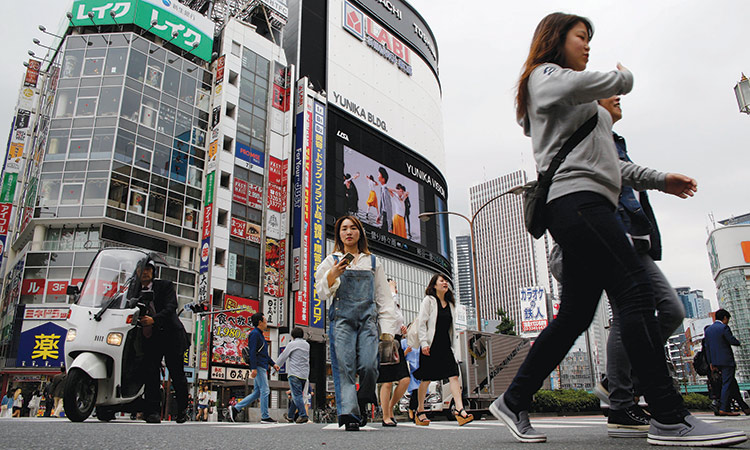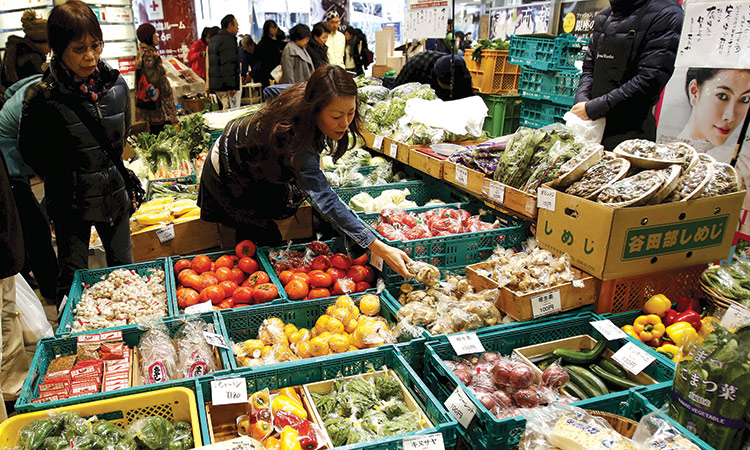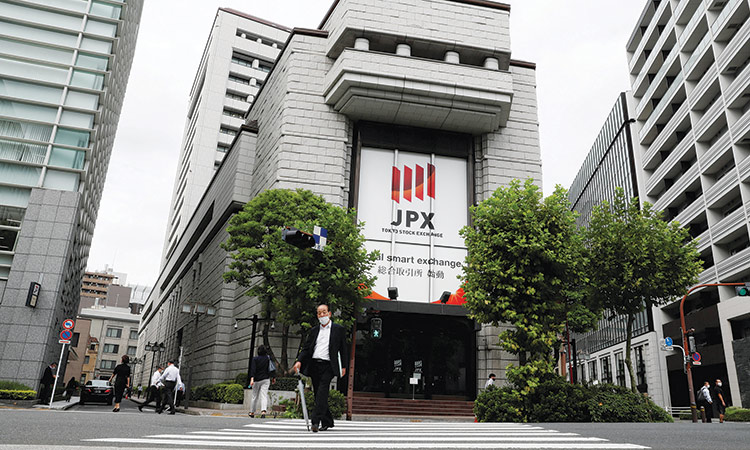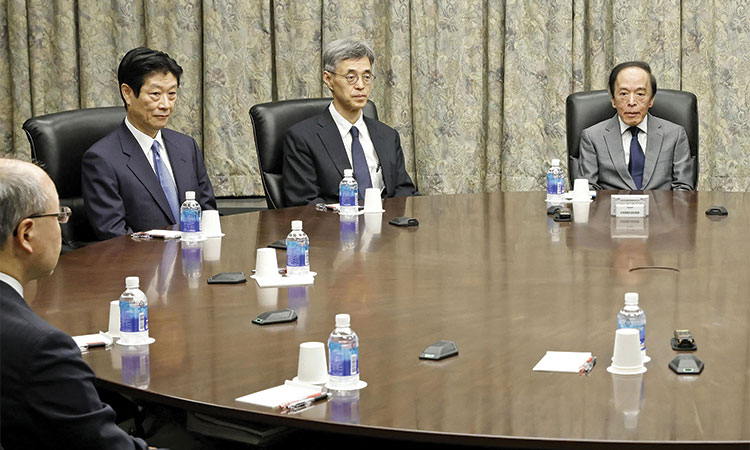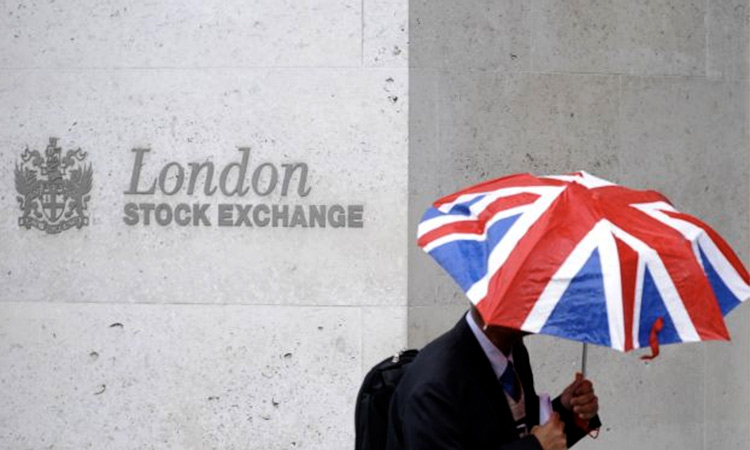BoJ loosens grip on rates as prices rise, markets bet on bigger pivot
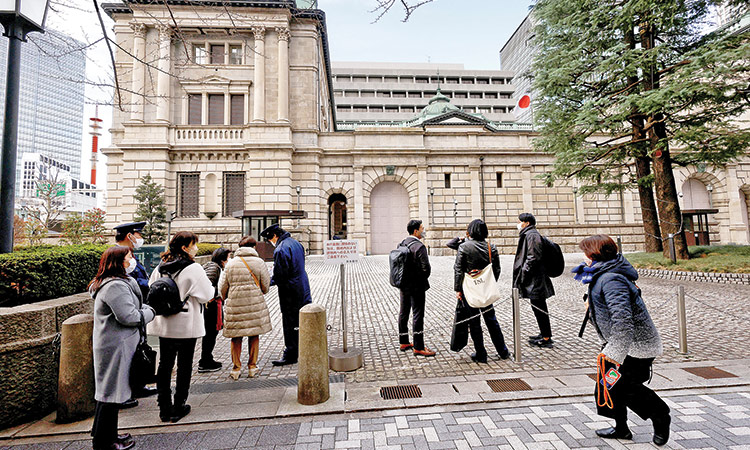
Visitors are seen at the headquarters of Bank of Japan in Tokyo, Japan. Reuters
In what some analysts said could be a seismic shift for global financial markets, the BOJ made its bond yield control policy more flexible and loosened its defence of a long-term interest rate cap.
Global markets saw the move as Japan coming into line with other major central banks, which have aggressively tightened monetary policy to beat soaring inflation, after decades of aggressive stimulus in an effort to reflate growth.
While the BOJ kept interest rates at ultra-low levels and stressed the need to maintain support for the economy, it said the tweak to its bond yield curve control scheme (YCC) would allow it to respond “nimbly” to risks including rising price pressures.
BOJ Governor Kazuo Ueda brushed aside the view that the move was a step towards policy normalisation, instead describing it as a pre-emptive move against the risk of too-high inflation.
But he also said the bank could tweak policy further if the likelihood of sustainably hitting its 2 per cent inflation target heightens, underscoring the sharper focus on price pressures.
“It is an important step towards eventual disbandment” of YCC, said Tom Nash, portfolio manager at UBS Asset Management in Sydney.
The BOJ kept unchanged its short-term rate target at -0.1 per cent and that for the 10-year government bond yield around 0 per cent.
It also maintained guidance allowing the 10-year yield to move 0.5 per cent around the 0 per cent target, but said those would now be “references” rather than “rigid limits”.
The BOJ said it would offer to buy 10-year Japanese government bonds at 1.0 per cent in fixed-rate operations, instead of the previous rate of 0.5 per cent, signalling that it would now tolerate a rise in the 10-year yield to as much as 1.0 per cent.
While some investors had expected a modest change in the BOJ’s guidance, the announcement shook financial markets which have grown used to years of its ultra-conservative policy.
Japan’s benchmark bond yield soared to a nine-year high. The yen strengthened 1.2 per cent to as much as 138.05 per dollar before weakening 1 per cent to 141.20.
Japanese banking stocks surged 4.6 per cent to an eight-year high on the prospect of a steeper yield curve that would revive profit from lending.
The move could also have implications for global money flows and asset price trends, since a cheap yen has been a mainstay of capital market funding for years, with investors borrowing the currency to invest in higher-yielding assets.
“Although the BOJ left the cap unchanged at ‘around 0.50 per cent’, the subtle changes in language suggest that they are gearing up, or at least open to, tweaking the YCC target at a future date, provided that conditions are supportive,” said Carlos Casanova, senior Asia economist at UBP in Hong Kong.
Ueda said the BOJ wanted to reduce distortions caused in bond prices and keep volatility from heightening in the exchange-rate market.
“We’d like to have market forces drive bond yield moves more,” Ueda said. “We don’t expect the yield to move up to 1 per cent, but have set this cap as a pre-emptive measure.”
Board member Toyoaki Nakamura dissented, taking the view that while making YCC more flexible was desirable, the timing was premature.
The BOJ’s shift comes after its US and European counterparts raised rates again, moves that could accelerate yen declines and push up Japan’s import costs and inflation.
In its quarterly outlook report, the BOJ revised up this year’s core consumer inflation forecast to 2.5 per cent from 1.8 per cent projected in April.
Ueda said the BOJ’s move was driven partly by a sharp overshoot in this year’s inflation expectations as more firms hiked prices and wages.
While its price forecasts for 2024 and 2025 were roughly unchanged from April, risks were skewed to the upside, the central bank said in the report.
“If inflation overshoots, we will respond appropriately,” Ueda said.
The BOJ’s action highlights the challenge it faces in balancing the risk of higher inflation and the need to keep supporting a nascent economic recovery.
While bond markets have been stable recently, the BOJ wanted to pre-empt another bout of volatility that could be caused by higher-than-expected inflation, Ueda said.
Since introducing its yield control scheme in 2016, the bank has had little trouble controlling yields when inflation remained well below its target. That changed last year when soaring commodity prices pushed inflation above the 2 per cent target and gave investors reason to attack the yield cap.
